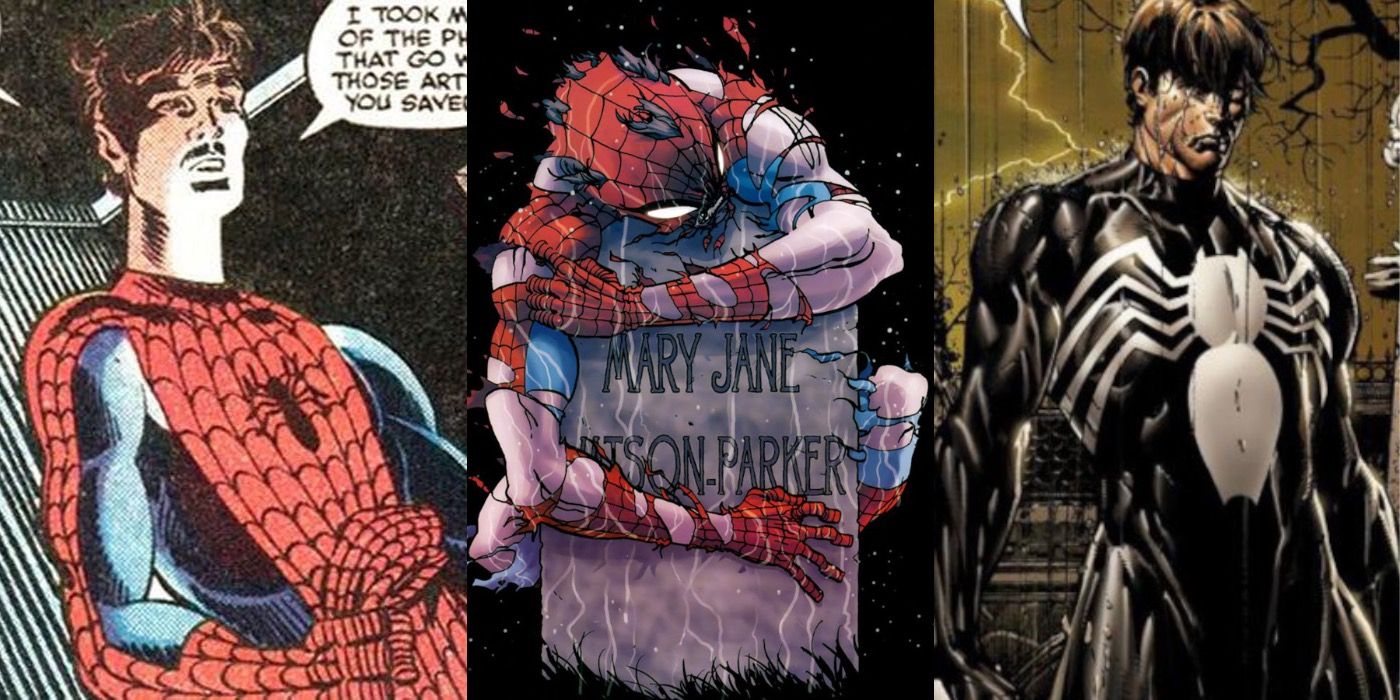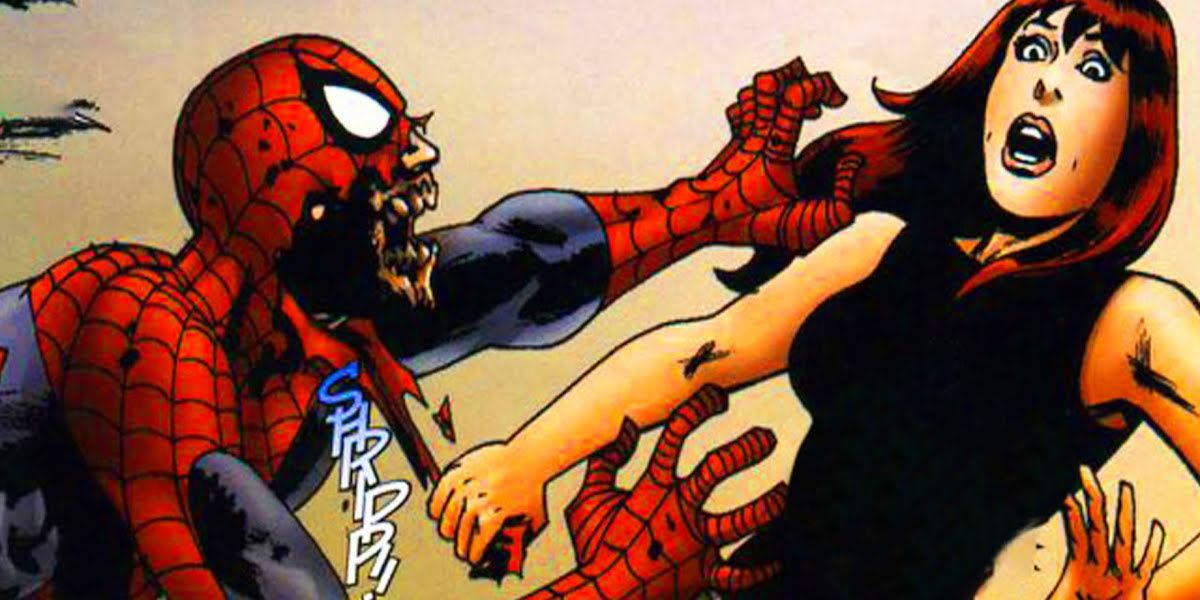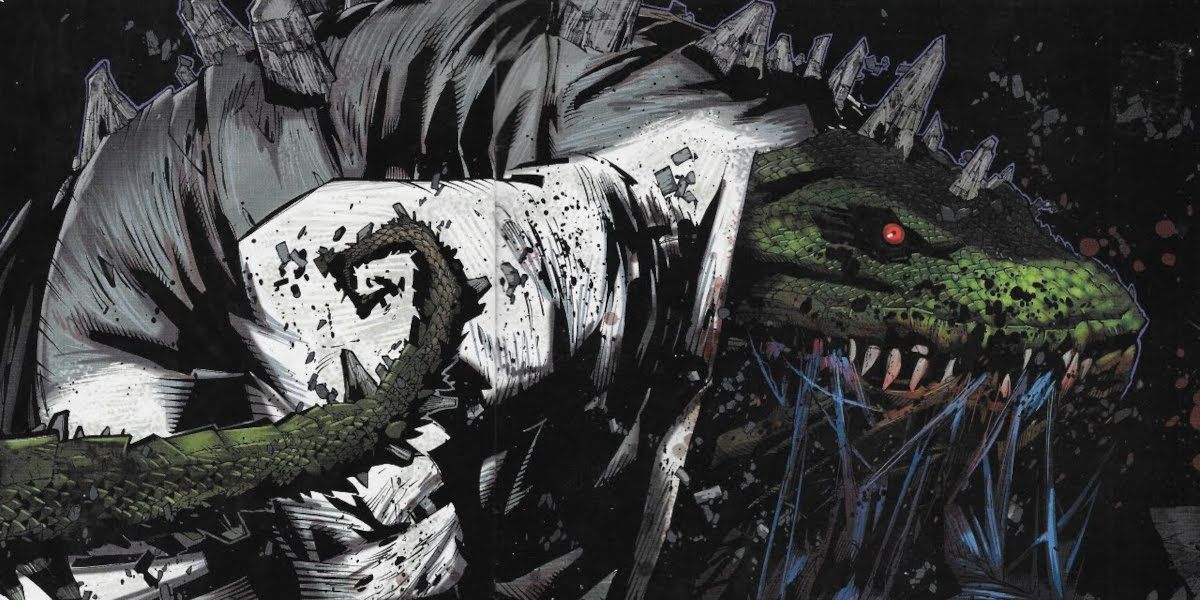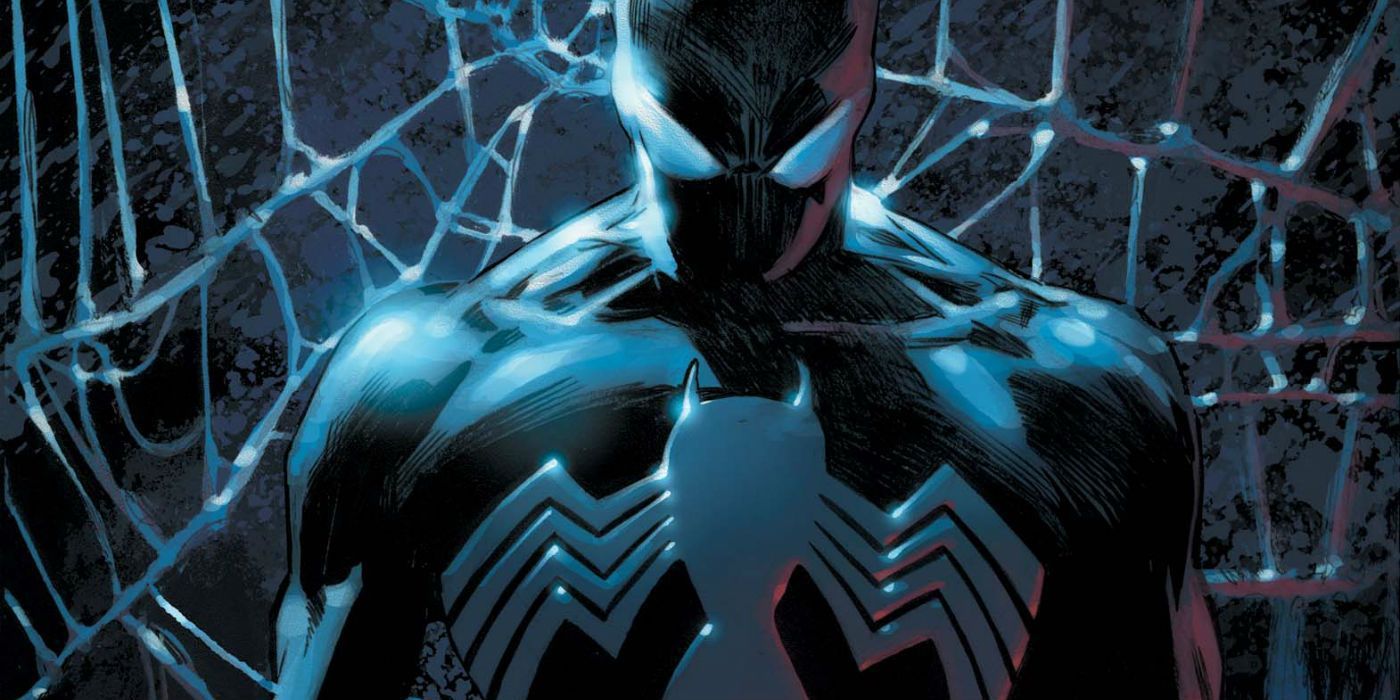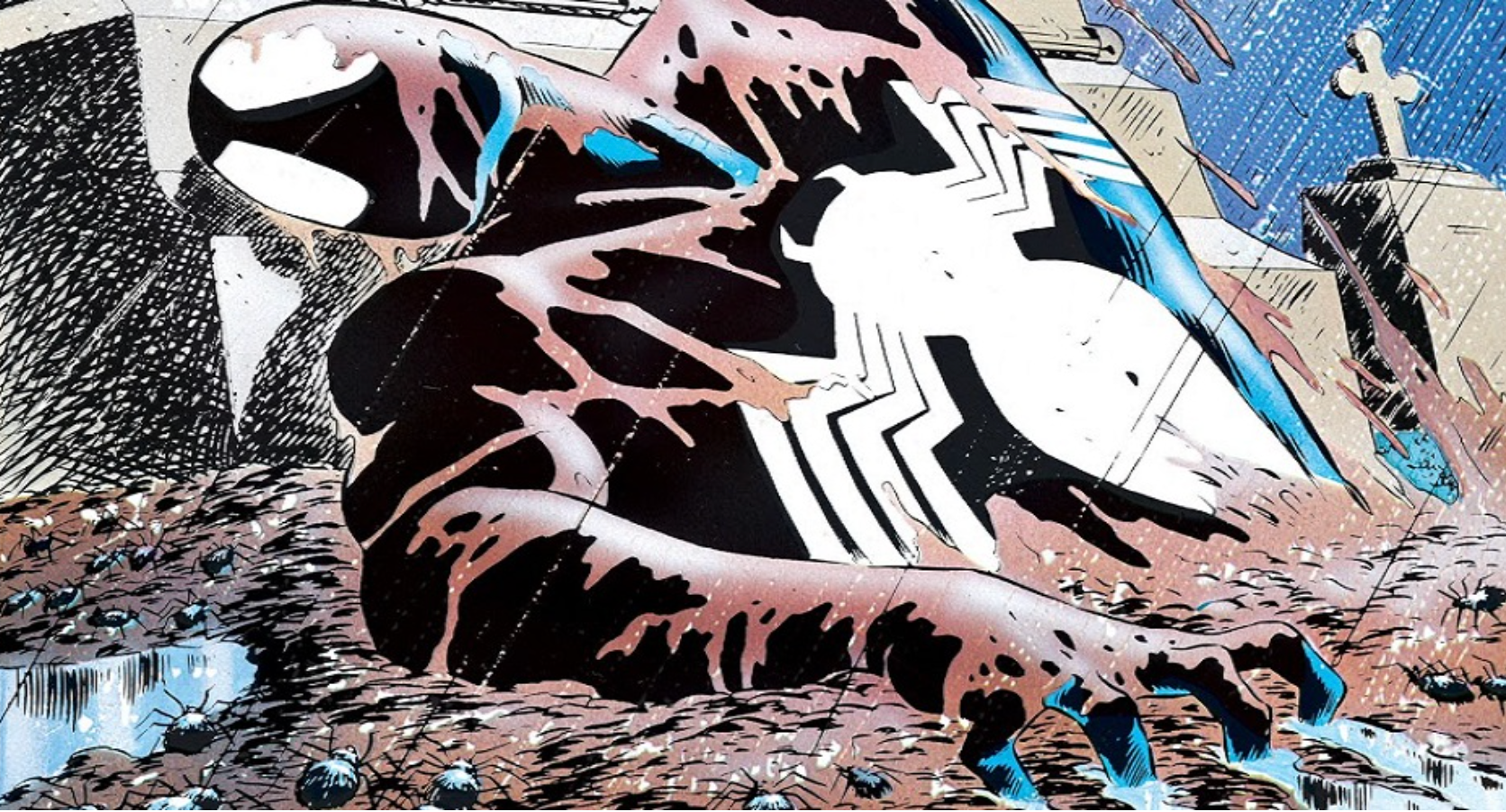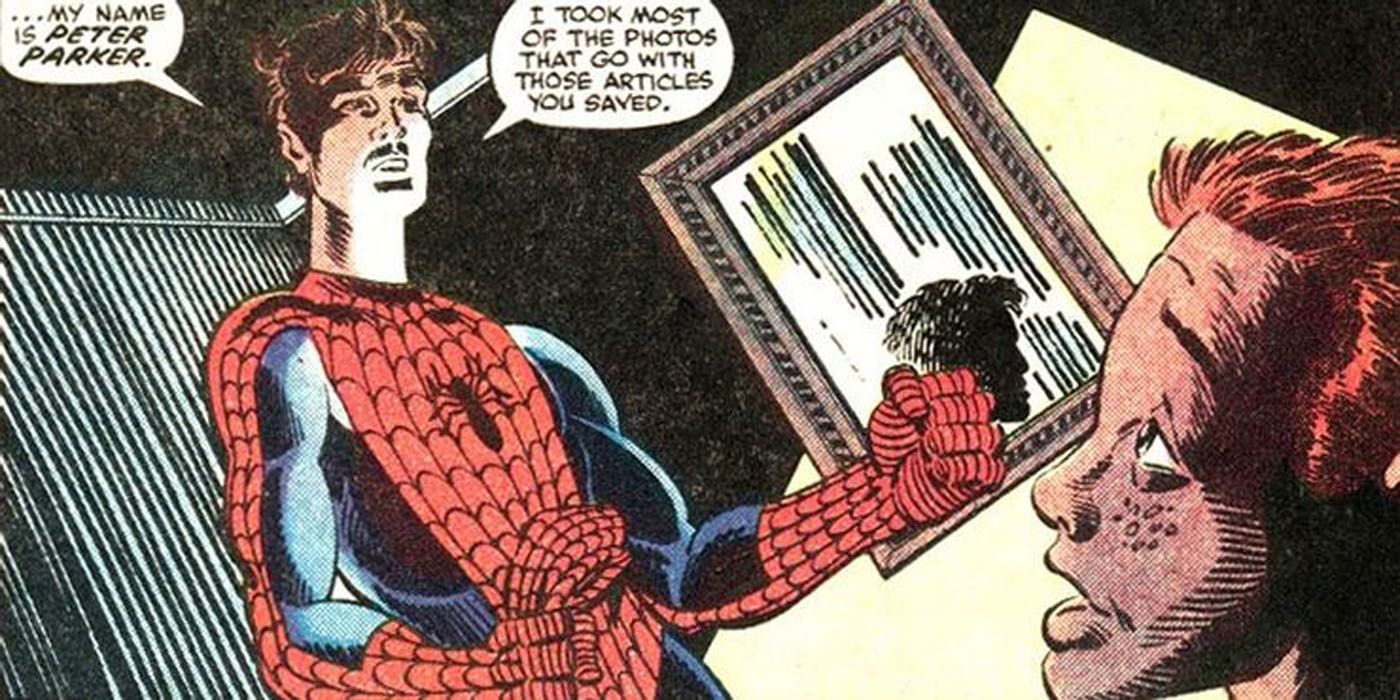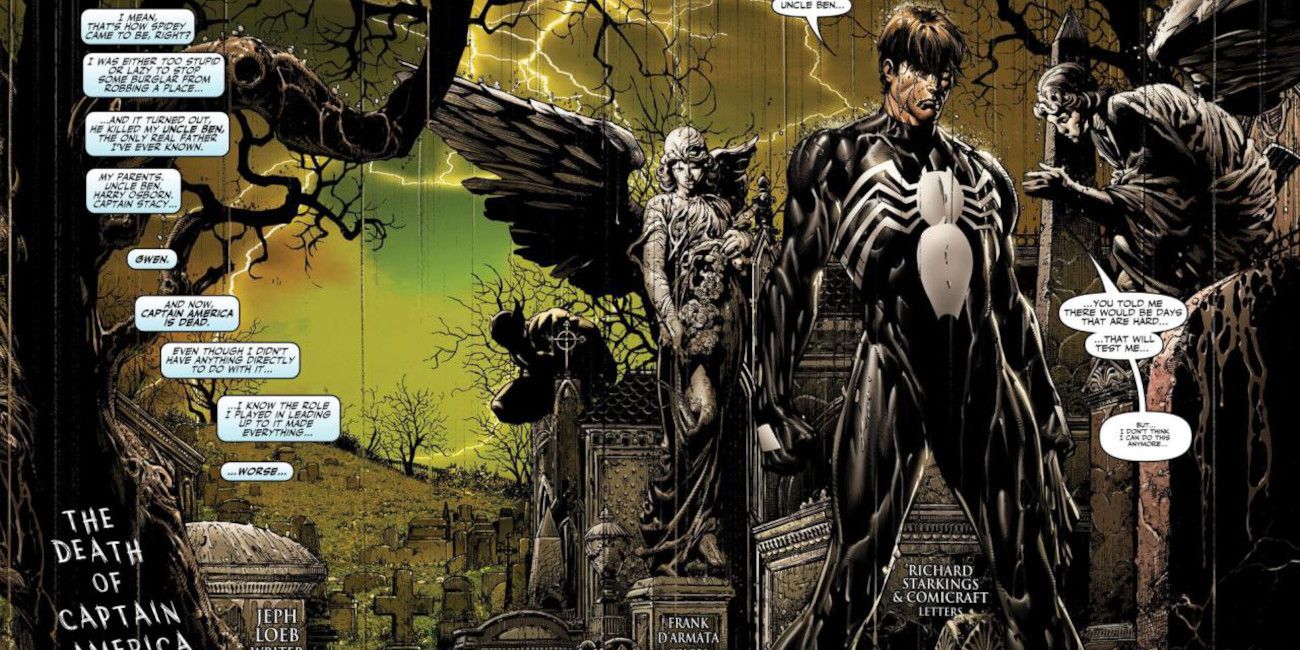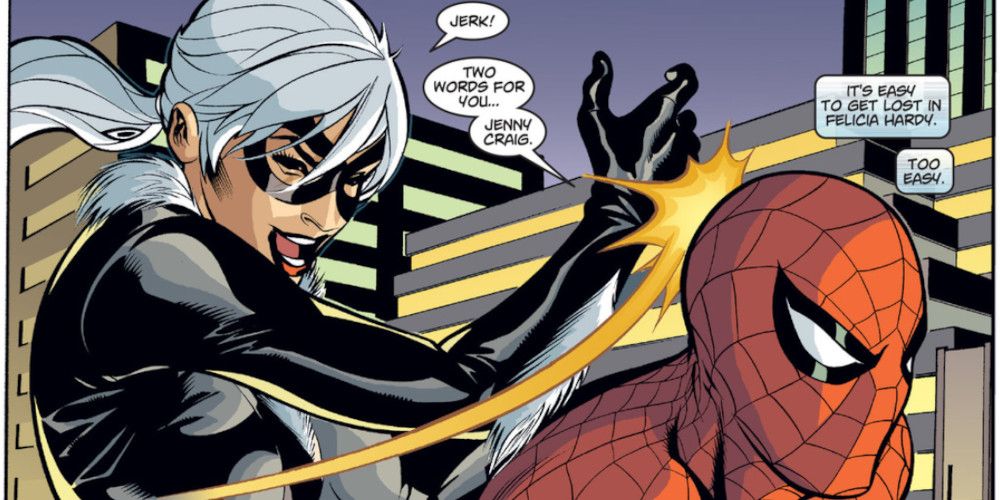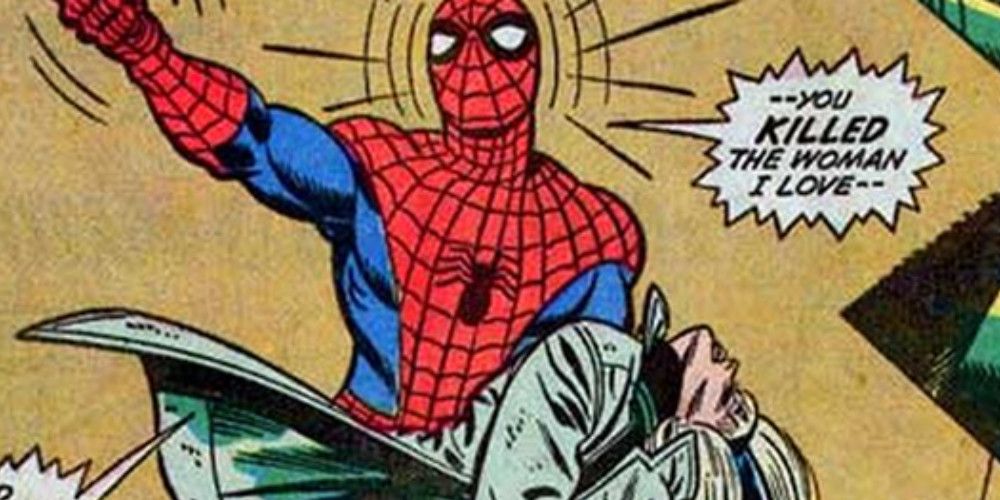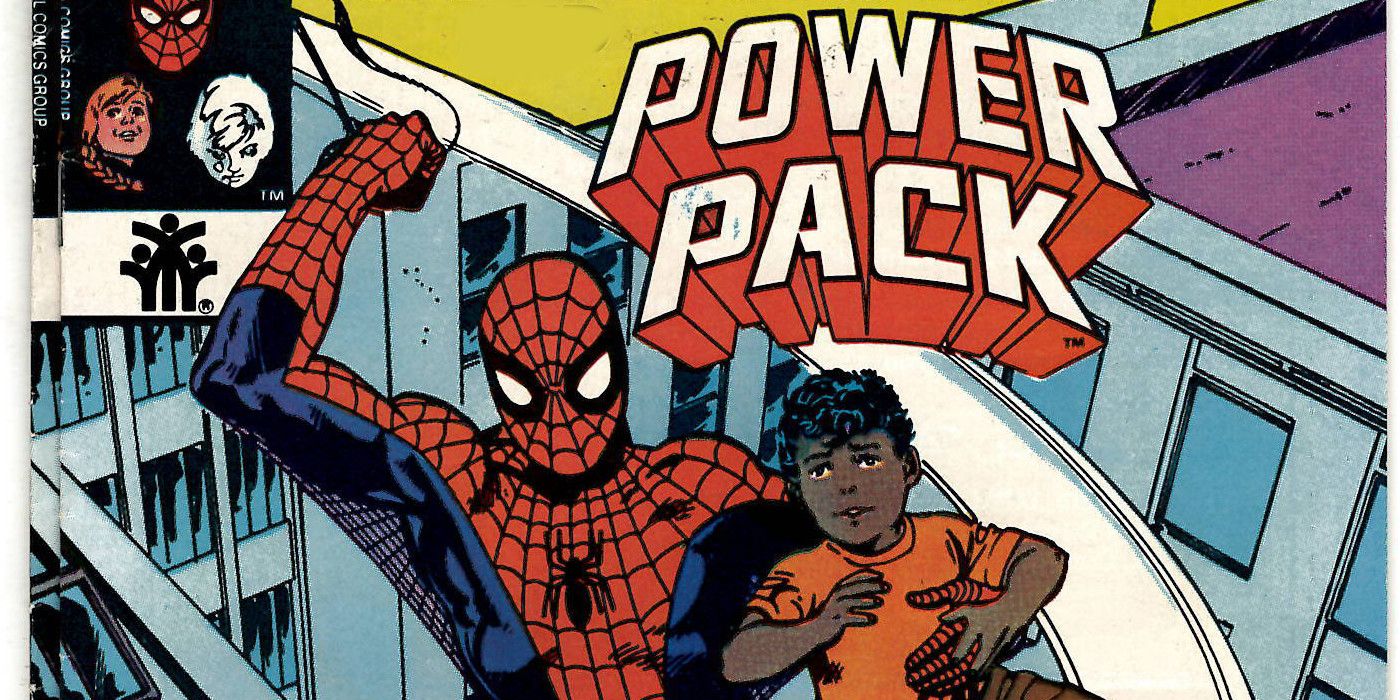Since he was first created in 1962, Spider-Man was conceived as a hero for a younger audience. Contrary to Captain America or Batman, he was a nerdy teenager who had to learn what it takes to become a superhero on his own, which made him relatable. Given this, his storylines were lighter than other superhero stories, and his comics included a lot of humor. However, as time passed and some of Spidey's fans grew up, so did many of his stories.
In general, Spider-Man remains one of the most kid-friendly characters in Marvel history. However, some of his comics completely deviate from this tone. These Spider-Man comics tackle mature topics, often in a graphic manner, and portray Spider-Man as a less easygoing hero. They're definitely not suitable for kids who love their friendly neighborhood web-slinger.
10 Marvel Zombies Features Peter Eating His Family
Set in Earth-2149, Marvel Zombies follows an alternate universe where all of Earth's heroes have been turned into zombies. They retain their intellect but can't control their hunger. Ready to save his loved ones, Earth-2149's Peter Parker arrives home to take Mary Jane and Aunt May to a safe place, but he gives in to temptation and eats them.
Albeit not Spider-Man's darkest moment, Marvel Zombies is definitely a horror tale that most kids would find scary. In addition to its depictions of graphic violence, it shows one of Spider-Man's all-time lows, as he's incapable to control his hungry and ends up eating the people he should have saved.
9 The Amazing Spider-Man: Shed Turned The Lizard Into A True Monster
"Shed" in The Amazing Spider-Man #660 through #663, reimagines Dr. Curt Connors/The Lizard's story in a tragic manner. After his boss prevents him from taking his Lizard suppressants, Connors transforms into his reptilian form and goes on a rampage that ends with him devouring his own child. This heinous act pushes him to the edge and frees him from his human alter ego forever.
"Shed," by Zeb Wells and Chris Bachalo, is only a three-issue arc, but it's a true shift for one of Spider-Man's most known rogues. This series takes a somewhat sympathetic Spider-Man villain like the Lizard and turns him into an irredeemable monster. As a result, Curt Connors' metamorphosis may be too much for a kid to read.
8 The Amazing Spider-Man: Back In Black Shows A Vengeful Spider-Man
After an anonymous shooter kills Aunt May, Peter Parker swears revenge on the assassin. Spider-Man starts a dangerous investigation, becoming reckless with his secret identity and more willing to break the law. Throughout the series, he takes hostages, breaks arms, and even throws people through windows – only to save them at the last second.
"Back in Black," by J. Michael Straczynski and Ron Garney isn't particularly graphic, but it depicts one of the darkest Spider-man iterations. Instead of being a fun superhero full of one-liners and life lessons, he's a serious man driven by anger, and definitely not a kid-friendly superhero.
7 Kraven's Last Hunt Deals With Suicide
Kraven's Last Hunt, by J.M. DeMatteis and Mike Zeck, depicts Spider-Man and Kraven the Hunter's last showdown. After drugging Spider-Man and burying him alive, Kraven replaces him as a hero, proving once and for all he's the superior being. However, once Spider-Man returns, Kraven accepts his defeat and retires to his home, where he commits suicide by gunshot.
Even though Kraven's Last Hunt starts like a regular battle between Spider-Man and Kraven, it takes a dark turn in the end. Kraven's suicide, motivated by losing faith in himself, would be a very difficult topic to explain to a kid.
6 The Amazing Spider-Man: The Kid Who Collects Spider-Man Is Plain Sad
In 1984, Roger Stern and Ron Frenz created "The Kid Who Collects Spider-Man," which featured in The Amazing Spider-Man #248. This comic tells the story of Tim Harrison, an avid Spider-Man fan who collects articles and all kinds of Spidey mementos. Touched by this, Spider-Man visits Tim and the two have a long conversation about the hero, and he even reveals his true identity.
After Spider-Man leaves, the comic reveals how Tim is a terminally ill patient in a cancer clinic. Meeting Spider-Man was the kid's last wish, which is now fulfilled. "The Kid Who Collects Spider-Man" isn't really dark, but it's a very sad story that confronts Spider-Man with something he cannot change. The reality of this tragic event should remain far from younger audiences.
5 Spider-Man: Reign Is A Very Controversial Story
Set 30 years in the future, Peter Parker is a senior who doesn't act like a superhero anymore. He's a lonely florist, tormented by the death of his wife, Mary Jane, and living in a dystopian New York City controlled by the authoritarian government The Reign. Although he's better off retired, Peter is forced to take the Spider-Man mantle back after many of his foes return.
Spider-Man: Reign is one of the most controversial Spider-Man comics ever. First, it depicts a decaying Peter Parker, instead of the boyish guy everyone loves, which shatters the reader's idea of this character. It also implies Mary Jane died of cancer due to Peter having radioactive sperm, which would be an awkward thing to explain to a child.
4 Fallen Son: The Death Of Captain America Depicts A Depressed Spidey
Based on Elizabeth Kubler Ross's Five Stages of Grief, Fallen Son: The Death of Captain America imagines various superheroes' reactions to Steve's death. The fourth issue titled "Depression" features Spider-Man as he reflects on the people he has lost, including his Uncle Ben, Gwen Stacy, and now, Steve Rogers.
Fallen Son: The Death of Captain America isn't a graphic comic, but it explores mature topics such as death, grief, and mental illness. Even though it ends on a hopeful note — as Wolverine tells Peter the pain eventually goes away — it isn't recommended reading for kids.
3 The Evil That Men Do Tackles Serious Topics
Spider-Man/Black Cat: The Evil That Men Do pits Black Cat and Spider-Man against Mr. Brownstone, a mutant with the ability to put drugs in anyone's body. This series, created by Kevin Smith, Terry Dodson, and Rachel Dodson, only lasts six issues, but it explores a lot of mature topics.
In The Evil That Men Do, Spider-Man and Black Cat try to make sense of the violent underworld of drugs and their victims. The comic includes heinous moments, marked by taboo topics like death by overdose and implied rape. Even though it has a happy ending, it could traumatize children
2 The Night Gwen Stacy Died Truly Marked Spider-Man
"The Night Gwen Stacy Died" follows Spider-Man as he tries to rescue Gwen Stacy, his girlfriend, from the Green Goblin. Unfortunately, Gwen dies in the middle of the battle. After the Green Goblin throws her from a bridge and Spider-Man catches her with a web, the whiplash breaks her neck.
Controversial since it was first released, "The Night Gwen Stacy Died" features Spider-Man's worst failure. This story, featured in The Amazing Spider-Man #121 and #122, portrays Spider-Man as a fallible hero, which could truly affect a kid's idea about him.
1 Spider-Man Admits He Was Molested In Spider-Man & Power Pack
In 1984, the National Committee for Prevention of Child Abuse (NCPCA) allied with Marvel to create Spider-Man and Power Pack. The comic, created by Jim Salicrup and Jim Mooney, features Spider-Man comforting a victim of child sexual abuse and revealing he too was molested when he was younger by Skip Wescott, an older boy.
This story is actually a PSA about sexual abuse, so it was created to teach kids about this horrendous crime. Sadly, it doesn't fulfill its purpose. In fact, it's far too disturbing, even for adults, and Salicrup has stated that he deeply regrets writing it. Consequently, it's better kept in the Marvel Hall of Shame.

